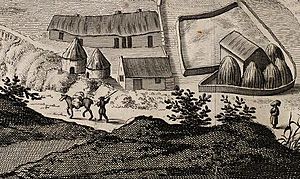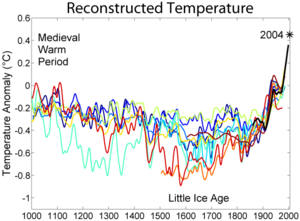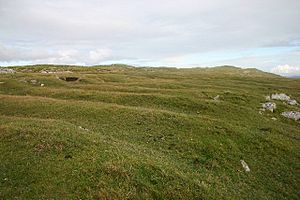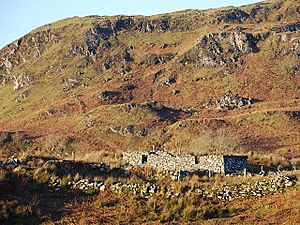Agriculture in Scotland in the early modern era facts for kids
Imagine Scotland between the early 1500s and the mid-1700s. This time is called the early modern era. During this period, farming in Scotland changed a lot. The weather got colder, which made growing food harder. This time was known as the "Little Ice Age". Sometimes, there wasn't enough food, and people faced hunger.
Over time, the old system where powerful lords controlled everything started to fade. New groups of landowners, called lairds, became important. Other people, like yeomen (who owned land) and husbandmen (who farmed land), also played a big part. Many young people left home to work on farms or in houses.
When England invaded Scotland in the 1640s, it affected farming. Later, after Scotland and England joined together in 1707, people tried to make farming better. They brought in new ideas like the English plough, different grasses, and new crops like turnips and potatoes. Farmers also started to fence off their land, which changed how farms looked. This led to many people, especially cottars (small farmers), having to leave their homes in what became known as the Lowland Clearances.
Contents
How Scotland Farmed in the 1500s
Scotland is smaller than England and Wales and has less good farming land. Most of the best land is in the south and east. The "Little Ice Age" made things colder and wetter, especially towards the end of the 1600s. For example, in 1564, it froze for 33 days straight! This meant crops couldn't grow as high up mountains, and the growing season became shorter.
Because of the cold, some land, especially in the hills, was left empty. But new farms appeared in other places, like old hunting areas. Almost half the years in the late 1500s had food shortages. Scotland had to buy lots of grain from countries like Poland, through ports like Danzig. These ports became so important that Scottish people even set up communities there.
Land and People in the 1500s
The way land was owned changed. Old feudal lords became less powerful. Instead, a new group called lairds became the main landowners. They were like gentlemen in England. Below them were yeomen, who owned a good amount of land, and heritors, who had legal rights to land and helped with local government.
Most people worked in farming to feed themselves. These included husbandmen, who were smaller landowners, and free tenants. Below them were cottars, who had small plots of land and often worked for others. Some people, called grassmen, only had rights to graze animals.
In the Lowlands, many young people, both boys and girls, left home to work as farm servants. Women were a very important part of the farm workforce. They helped with all major tasks, especially harvesting crops. They were often the main people cutting the grain during the harvest.
Farming Methods in the 1500s
Most farms were in small villages called fermtouns (Lowlands) or bailes (Highlands). A few families would farm an area together. The most common system was called infield and outfield farming.
- The infield was the best land, close to the houses. It was farmed all the time and got most of the animal waste to make it fertile. Crops like barley, oats, and sometimes wheat were grown here.
- The outfield was a larger area used mainly for oats. It was fertilized by cattle grazing there overnight. Sometimes, it was left empty for a while to recover.
In coastal areas, farmers used seaweed as fertilizer. Near towns, they used town waste. The amount of food grown was not very high, often only about three times the amount of seed planted.
Families farmed strips of land called runrigs. These were long, narrow strips of land, like ridges and furrows, that usually ran downhill. This helped manage wet and dry areas. Most ploughing was done with heavy wooden ploughs pulled by eight oxen. This was slow work, covering only half an acre a day.
In the late 1500s, in the west Highlands, people started using spades and foot ploughs (called cas chrom) instead of ploughs. They created lazy beds, which were raised rows of soil. This allowed farming in places where ploughs couldn't go. Farmers also used shieling-grounds in the summer. These were distant pastures with simple shelters where cattle grazed. All farms raised animals like cattle, sheep, and goats, and grew some grain. However, some areas specialized, like the eastern Borders, which had a long history of sheep farming.
Changes in the 1600s
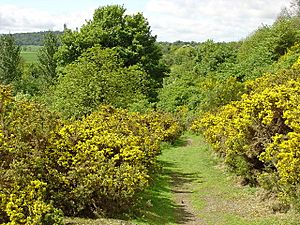
In the early 1600s, hunger was still common. Between 1620 and 1625, there were four times when food prices were very high. When England invaded Scotland in the 1640s, it caused a lot of damage to farms and markets, making prices rise quickly.
Under English rule (the Commonwealth), Scotland was taxed heavily but could sell its goods in English markets. After the king returned (the Restoration), trade rules with England came back. From 1660 to 1688, things generally got better. Landowners tried to improve farming and cattle raising. More land was used for crops in the Lowlands, especially near growing towns like Edinburgh.
Farmers in areas like the Lothians started using lime to improve the soil. They planted trees and introduced new crops and ways of rotating crops. In 1695, new laws allowed farmers to combine their runrigs and divide up common land, leading to small-scale enclosures (fencing off land).
Cattle and Sheep Farming
Highlanders had been moving cattle to the Lowlands to sell since the 1500s. By the 1680s, this trade grew, and cattle were also sold in England. Special roads, called drovers roads, were created for moving cattle from the Highlands down to England. Some cattle even went to London to be sold. Sheep farming also became more commercial in the Borders, especially after Scotland and England shared a king in 1603. Dairy farming became important in the western Lowlands.
Hard Times at the End of the 1600s
The good times ended in the 1690s. Trade with other countries slowed down. Then, there were four years of very bad harvests (1695, 1696, 1698-9). These years are remembered as the "seven ill years". This caused severe hunger and a drop in population, especially in the north. These famines were particularly harsh because people hadn't seen such bad shortages for a while. Luckily, these would be the last major famines of their kind.
Farming in the Early 1700s

The weather started to get better in the early 1700s, though there were still tough years, like 1739–41. After Scotland and England officially joined in the Union of 1707, Scottish landowners wanted to improve their farming methods. In 1723, a group called the Society of Improvers was formed. It had 300 members, including dukes, earls, and lairds.
Before this, Scottish farmers could read English books about farming. But in the 1700s, Scottish authors started writing their own books. At first, these changes only happened on some farms in East Lothian and on the estates of a few keen landowners. Not everyone succeeded, but the idea of "improvement" spread among the wealthy landowners.
New Farming Ideas
Many new things were introduced:
- The English plough, which was more efficient.
- New crops like rye grass, clover, turnips, and cabbages.
- Lime was used to make the soil less acidic.
- Wetlands were drained, roads were built, and woods were planted.
- Farmers started drilling and sowing seeds in rows, and rotating crops to keep the soil healthy.
The potato arrived in Scotland in 1739 and greatly improved what ordinary people could eat. Land was increasingly fenced off, replacing the old runrig system. This created the rectangular fields we see in the Lowlands today. New farm buildings were built, often following standard designs, replacing the old fermtouns.
Big Changes for People
These farming changes had huge effects on people. Although some landowners tried to help, the Agricultural Revolution led to what is now called the Lowland Clearances. Hundreds of thousands of cottars and tenant farmers in central and southern Scotland were forced to leave the farms their families had lived on for centuries.
Many small villages were taken apart. The people who lived there had to move. Some went to new villages built by landowners, like Ormiston or Monymusk. Others moved to growing industrial cities like Glasgow and Edinburgh, or to northern England. Tens of thousands also left Scotland entirely, moving to Canada or the United States to find land to farm.
Images for kids
-
A section of drover's road at Cotkerse near Blairlogie, Scotland
-
Illustration of a plough from Jethro Tull Horse-hoeing husbandry (reprinted 1762)


